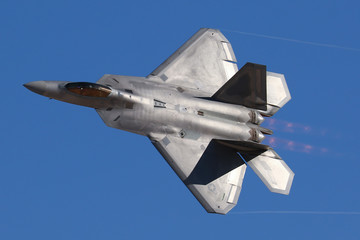The 20 Biggest Myths in Deer Hunting

Popular myths die hard. Bigfoot roams the woods and giant bucks move only at twilight. Well, I’m no expert on bigfoot, but I can shed some new light on the buck movement thing, and then take a sledgehammer to another 19 whitetail hunting misconceptions.
It’s time to update our strategies, people! At the end of this trail of rubble from what many hunters once believed to be true, you’ll find 10 rock-solid truths from some of America’s best hunters — indisputable facts that will help you to see and shoot more bucks.
The Biggest Deer Hunting Myths, Busted
If someone tromps close to your stand, the spot is blown
Last November 19, Indiana hunter Christopher Thomas went to get into his ladder stand and found that some jerk had ripped it off. Chris was bummed but didn’t give up. He plopped down beside a tree and 30 minutes later a gang of pumpkin-colored drive hunters marched through. What else could go wrong? Chris hung tough, though, and around noon was rewarded with a 198%-inch non-typical that popped over a ridge with some does. Tenacity, man! Once other hunters have come and gone, a shooter might show up anytime.
The best places to find sheds are at fence hops and creek crossings
It’s an old wives’ tale! I know guys who find hundreds of antlers each spring, and they say that over the years they probably have found, oh, one or two sheds at fence jumps. Antlers are where you find them, and that is most likely in winter feeding and bedding areas and along trails that link the two habitats.
Never hunt the same stand two days in a row
One day my buddy dragged an 8-pointer into our Montana camp and announced, “The alfalfa stand is hot, y’all. I saw three other shooters!” The next afternoon I climbed into the same perch and drilled a 140-inch 9-pointer. When deer are locked into a bed-to-feed routine-or any travel pattern-and the weather and wind stay right, don’t hesitate to hunt a stand two, even four days running. Strike before the deer patterns change.
Stay out of your best spots until the weather is perfect
Sometimes you gotta say “To hell with it” and hunt a big buck right now, especially on public land. If you don’t risk it, another guy will move in and hunt “your” buck. Or a food source will change, or a doe a mile away will come into heat early. While you sit home and wait for the stars to align, your buck might leave the area or get killed. Be smart, but don’t be afraid to spray on some scent-killer and go for it once in a while.
The best spot for a trail cam is a well-used trail
Forget the name: The spot for a cam is near hot scrapes deep in the timber. Monitor the blackest, dankest scrapes in your area for four or five weeks through all phases of the rut and you’ll photograph most of your resident bucks as well as some vagabonds prowling for does. Use your photos with maps, aerial photos, deer sightings and other scouting intelligence to set up ambushes.
If you don’t shoot that young buck now, the neighbor will
I can recall one time in 25 years when I actually let a 6-pointer walk off and then heard a rifle shot in that direction. And heck, even then the guy might have shot a different deer or missed. The reality is, many to most of the bucks you let walk will survive and grow another year. If you do decide to shoot a so-so buck, that’s fine-but do it because you want to, not because somebody else might.
A full moon is horrible for hunting because deer feed all night
My head spins with all the moon theories I’ve tried. Just when I think one has merit, a monster will show up when and where he shouldn’tor I won’t see a hair of a deer when the moon is “perfect.” I’ve developed a foolproof theory:Just hunt, baby! But there is one constant: In years when a full moon overlaps the rut during the first two weeks of November, some big bucks will lie low at dawn, then move hard during late morning and midday. Be out there. This year, the November full moon will appear the week of the 24th, but some big boys will still cruise for the last hot does as the post-rut begins.
Always use a pee bottle
Scientists have found that human urine does not spook deer and can actually be a “mammalian attractant.” Some biologists have gone so far as to doctor scrapes with their pee, which they say can lure in does and bucks. I don’t get that carried away, but I don’t use a pee bottle anymore either. I just pee off my stand and don’t worry about it. And it sure is a lot easier (for us guys, at least).
After shooting a buck, you must cut its throat to preserve the meat
I saw a young guy “bleed” an 8-pointer last fall and couldn’t believe it. His granddaddy must have taught him to do that! Once and for all, do not cut a buck’s throat and cause a big bloody mess. There’s no need to, as it doesn’t affect the taste of the meat and may only ruin a cape for mounting. And you don’t have to slice the tarsal glands off the hind legs either, though you might want to. Slung in a tree during the rut, the black, stinky things make great “challenger scents” if you’ve got a tag for a second buck.
The more acres you have to hunt, the better
In fact, it’s just the opposite in many areas. If you hunt a huge public area or 400 or more private acres, you’ll probably have to share it with a few to an army of strangers. To a big deer, that pressure changes everything. Plus, other people limit where and how you can hunt. So think small. If you and a good buddy can get permission to hunt (or lease) 50 to 100 acres in the right spot, you’ll have more fun and likely shoot more bucks.
Real rattling antlers work better than fake ones
Phooey! Don’t tell me that a I0-pointer can stand out there and say, “Hmm, those antlers are pinging too much, must be fake, see ya!” If a buck is rutting hard, is in the mood to respond and is also within hearing distance, he will come running to synthetics, real horns or even a little rattle bag or box. Rattling is about good timing, not actual antler sounds.
Big deer only move at dawn and dusk
Let’s see, two years ago I shot a 182-incher at 3:20 p.m. A good 75 minutes before dark one day last December, I slugged a 165-inch Iowa brute in a soybean field beside a county road. And it’s not just me. Hunters from all over report in to the Big Buck Zone (bigbuckzone.com) with stories and pictures of 160- to 200-inch monsters shot during the “off” hours of 9:00 a.m. to 3:30 p.m. So go in early in the afternoon, stay late and remember two things: 1) The colder, the better (20 to 30 degrees is prime); and 2) bucks will linger around food sources and in nearby funnels in the morning and move earlier for the eats in the afternoon. And the golden rule: During the first 15 days of the November rut, stay out all day. You might kill a giant any time.
If your area has mature bucks, don’t shoot the first big one you see; a bigger one is probably on the way
Bet on the “second, bigger buck” card too many times, and you’ll go home broke. Let a solid shooter walk because you think bigger animals roam your woods and you’re probably going to regret it. I’m not saying you should shoot the first young or spindly racked buck that comes by. But if you see a stout animal with 8 high and heavy points, I advise you to take him. If he’s a mature deer, you’d better damn sure shoot.
Your daddy might have told you that, but Pops isn’t always right. A doe or buck stomps its foot and bobs its head when it looks at a strange object it just can’t make out (like you huddled on the ground or in a tree). It’s nervous body language, yes, but it doesn’t necessarily indicate imminent flight. Freeze and don’t move a muscle; don’t make direct eye contact if the animal is super-close. More times than not, the deer will settle down and start walking off. Now you’ve got a better, easier shot. Or let it walk off-at least it didn’t blow, run and spook every deer within a quarter mile.
Hang your stand at least 25 feet high

Well, at 25 feet and higher a buck probably won’t bust you. But if, like me and a lot of other people, you’re afraid of heights, you’d be too freaked out to stand, steadily draw your bow and shoot. The angle of your shot at such a height also decreases the available area of the vital zone for an arrow or bullet.
After hanging and hunting out of too many tree stands to count, I’ve determined that 17 to 21 feet is just about perfect. You feel solid, safe and comfortable, and when a buck comes in at you broadside, you have a killer sight picture and shooting angle to his heart and lungs.
Rattling is best pre-rut
I used to think that rattling 7 to 10 days before the peak rut was the best time, too. But a few years ago I took to heart the results of a study by noted Texas biologist Mick Hellickson. He found that while you might rattle up a big boy in late October or early November, the peak of the rut a week or two later is a better time to rattle in the most bucks, large and small. I’ve shifted my horn-cracking back 7 to 10 days-and I’ve rattled in more bucks as a result.
The biggest scrapes are made by the biggest bucks
I think I wrote that a few times. Oh, well, the more you hunt, the more you learn, right? Truth is, a 6-pointer or a giant IO-pointer might have pawed a scrape the size of a tractor tire. And since different bucks often work the same scrapes, they grow and grow. The only way to be reasonably certain a big deer is working a line of scrapes is to find three or more thick, fresh rubs nearby. Big rubs and big scrapes-now that’s the sign you want.
Big old bucks avoid permanent stands
At 8:00 a.m. on November 22, Jack Keihn watched a monster drop off a ridge, swagger down a logging road and walk under his humongous “hut stand.” Jack fired his 20-gauge and the 23-pointer went down in a heap. The 234-inch titan is the number-three non-typical killed with a shotgun in Indiana.
So, yes, a monster is apt to walk within easy gun range of a permanent stand, especially when he’s out of his gourd rutting for does. The old saw that the earlier you build a wooden platform in a tree or a shooting house on the ground or on stilts, the better, still applies-let deer get used to it before the season.
If the wind is wrong, don’t even bother going out
Busted: One day Iowa bowhunter Brian Larue crept toward his favorite stand, even though the northwest wind was wrong for it. When he got to the spot, he happily found the wind to be straight west-not bad at all.
Brian climbed up and an hour later shot a 22-pointer; the rack was 30 inches wide and net-scored 221 inches.
The lesson here: The wind at your truck might blow one way, but a half mile away, at your stand, it might have turned a little or a lot, depending on how the terrain, trees and cover affect the breeze and thermals there. Remember, winds can change by the hour, too. What was a poor wind at your truck might be passable-to-perfect for hunting a hot spot. So sneak close and check it out. If it’s wrong when you get there, ease back out. Otherwise, go for it.
Read Next: 10 Odd and Unorthodox Deer Hunting Tips That Actually Do Work
Miss a target buck and your season is over
Hmm, not always the case. Sail an arrow over a deer’s back and it will flinch, jump and run off a ways. But if the animal didn’t see you, it doesn’t really know what happened. It might think a stick cracked or a branch fellremember, deer hear sounds like that all the time.
There are many stories of giant whitetails being missed by a hunter and then settling down and circling back on a trail or scrape line, only to get killed ( or missed again) the second time around. So keep your wits about you, watch the jittery buck you just let go and be ready to atone.
You definitely won’t get as many second chances when you blow it with a rifle, but still, be ready.
One time I missed a 160- incher at 250 yards out on the Wyoming plains. The animal got confused, looked all around and took off like a shot, straight toward me! I dropped him at 80 yards and was happy, even though my shooting was terrible.
Read the full article here









